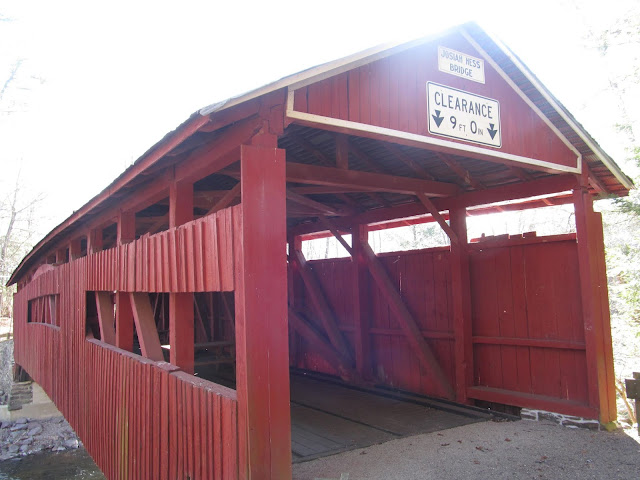The 110 foot long Josiah Hess Covered Bridge is located on Huntington Creek in Fishing Creek Township. One of 23 historic covered bridges in Columbia County, the covered Burr arch-truss designed Josiah Hess Covered Bridge was constructed in 1875 by Joseph Redline and W.J. Manning at a cost of $1,349.50. Today, the bridge is only open to pedestrian access, providing a nice place to get photos, have a picnic or to go fly fishing.
The covered bridge provided access to the Hess sawmill and farm. The bridge's namesake, Josiah Hess, was part of the 4th generation of Hess family members who called Pennsylvania home. Johann Conrad Hess, just 16 years old, climbed aboard the ship Glasgow in 1730 and set out on his journey to the New World and Philadelphia. It wasn't long after that when the Hess family migrated elsewhere in Pennsylvania, establishing farms and businesses in Columbia County. Now owned by the Columbia County Covered Bridge Association, it has been restored, and rededicated August 25, 2005. The covered bridge survived a close call the following year. The flooding from the storm of June 28, 2006 destroyed the West Paden Bridge located just downstream on Huntington Creek. At the Josiah Hess Covered Bridge site, swift moving currents severely damaged the south bridge abutment. However, quick action at the Josiah Hess Bridge by local contractor John Lapp may have prevented a similar fate that the West Paden Covered Bridge faced.
 |
| Inside the covered bridge. |
 |
| A nice view of the bridge portal. |
 |
| A remnant of when the bridge served vehicles. |
 |
| Bridge abutment. |
 |
| The bridge looks spiffy in spring, too. |
 |
| The Josiah Hess Covered Bridge makes for a nice fly fishing spot. |
How to Get There:
Sources and Links:
Columbia County - Josiah Hess Bridge
Scenic USA - Pennsylvania - Hess Bridge
Bridgehunter.com - Josiah Hess Covered Bridge 38-19-10
Interesting Pennsylvania and Beyond - Josiah Hess Covered Bridge Columbia County
Update Log:
November 22, 2021 - Crossposted to Quintessential Pennsylvania (https://quintessentialpa.blogspot.com/2021/11/josiah-hess-covered-bridge.html)


Comments